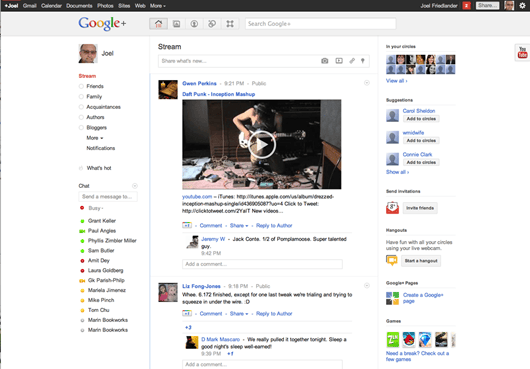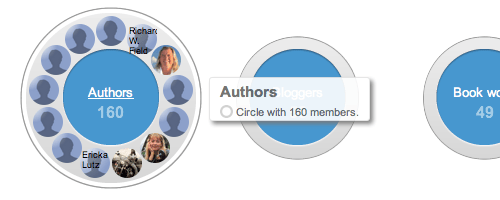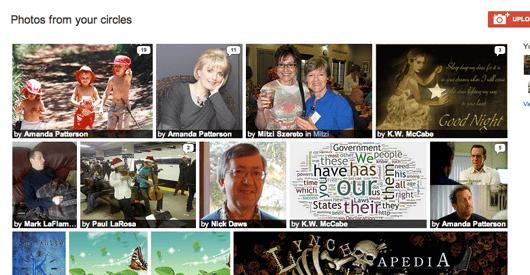When Google launched Google Plus (Google+) a few months ago in their latest attempt to gain a foothold in the social media world, a lot of people weren’t sure whether to applaud the move or bemoan the fact that we had another place to try to build a community.
After all, the world of social media isn’t exactly lacking in things to keep authors who want to market their books occupied. You can work on building a tribe on Facebook, promote and connect with people in your niche on Twitter, keep track of colleagues and discussions on LinkedIn, and maintain relations with readers on Goodreads. Isn’t that enough?
The New Kid Has Some New Tricks
And yet Google+ quickly grew to millions of members and is now the fastest-growing social media site in history. Faster than Facebook, faster than Twitter, faster than LinkedIn. Right now, by recent estimates, there are already more than 40 million people using the service.
There are really good reasons it’s become so popular so quickly. Some of these reasons make Google+ a great location for authors. Let’s take a look at three features that distinguish Google+ from the other networks we’ve come to know, and see where these features present opportunities for self-published authors.
Circling
Before talking about the features, take a moment to enjoy the look and feel of Google+. I don’t know about you, but I find the Facebook interface—at least the last time I looked—to be quite busy and distracting. Twitter, of course, isn’t encumbered with much of an interface, since it’s mostly a stream of short text messages.

Contrast that to Google+, which bears the mark of most Google designs. Simple, spare, blue and white, and lots of “negative” space make it seem clean and functional, focusing your attention on the content that’s being shared rather than the accoutrements of the interface.
On Google+ there are no “followers.” Instead you can “circle” people and they can circle you. But you don’t just add people to a circle; you can have many circles if you like, and each can have its own uses. For instance, you can sort people you circle into different areas, like high school friends, colleagues, friends you like to play music with, or bloggers who review books. People can be in more than one circle, too.
When it becomes time to share something, you decide which circles will receive it, or if it’s available to the public (that is, anyone at all on Google+).

This solves the ongoing problem I have with Facebook, and I suspect a lot of you have too: mixing personal and professional contacts. With Google+, the ability to segment your interests is built into the program, an intrinsic part of its functioning.
One thing that this makes immediately obvious is that you can craft messages, shares and announcements for specific groups. Authors can easily maintain lists of book reviewers, readers, media contacts, editors, designers, and other authors.Segmentation is the foundation of direct marketing, so this ability alone gives you the opportunity to market in new ways.
You can also follow the circles other people have put together, which is a quick way to gain access to the updates and information being published by leaders in your field.
Hangouts
One of the amazing features Google+ incorporated from the beginning is Hangouts, the ability to have quick video chats with other Google+ users.
If you’ve ever wrestled with videoconferencing software or services, this is an amazing feature. With no more effort than just clicking the “start a hangout” button and inviting others to join you, you can instantly have a real-time video conference right inside Google+.
Authors could use this capability for face-to-face meetings with their editors, to have a chat with a designer, or to bring in virtual assistants and marketing people for a strategy session on a book launch. The ideas for hangouts are pretty endless, and that’s even before you start using them to connect to readers.
Shares
Some people have tried to explain Google+ as being somewhere between Twitter’s rapid-fire text updates and Facebook’s robust photo- and video-sharing abilities.
But Google+ is really different from both other services, and one reason is the flexibility of sharing. On Twitter, of course, you’re limited to 140 text-only characters, although updates are often used for links to other content.

On Facebook, the status updates are limited to 420 characters, enough to write a very, very short story perhaps (see Lou Beech for examples). On Google+, I don’t think there’s much of a limit. You can post a one sentence update, and it makes sense. Or you can post an entire article if you like, with photos, videos or other content as part of it. Darren Rowse, for instance, the author and professional blogger, uses Google+ this way to communicate with his vast tribe.
This flexibility combines really well with the ability to segment your lists, since not all communications with all communities can be made to conform to the same restrictions. For instance,
- you might want to send a 300-word article to your community similar to an email update.
- short messages to marketing partners like affiliates or other authors in a blog network are just as easy.
- personal messages with a photo gallery from a trip or celebration can easily be shared with friends and family.
Altogether, Google+ has made a big impression on the social media community. Many users report spending a lot less time on Facebook, as the clean, uncluttered, and easy-to-use interface attracts them. Others say they enjoy the longer communications possible and don’t market quite as much on Twitter. There are communities of authors, readers, and lots of other kinds of people forming on Google+.
All of these developments will become more and more important to you as an author as the service continues to grow. Google has just recently added the ability to create pages for businesses, brands, products and companies.
The more Google+ grows, the more Google will combine it with its search, video, and advertising streams, and that combination is potentially explosive. I think you should be on Google+, and it looks like it’s going to be a great destination for some time to come.
If you have a Google account, you can just go fill out your profile and spend some time checking it out. I think you’ll like what you see.
Google+ Resources for Writers
Debbie Ohi’s master list of literary people on Google+
The Mashable.com Guide to Google+
Book reviewer Natalie Luhrs’ site on Google+
Jason Boog’s GalleyCat roundup of writers on Google+
This article was originally published as “Is Google+ Good for Writers?” on CreateSpace.com on November 17, 2011


